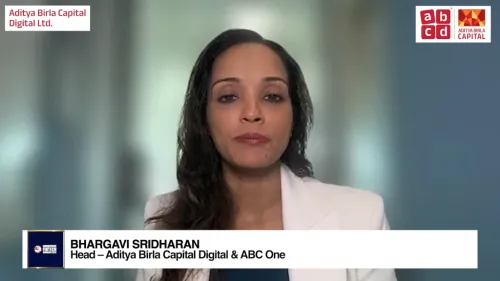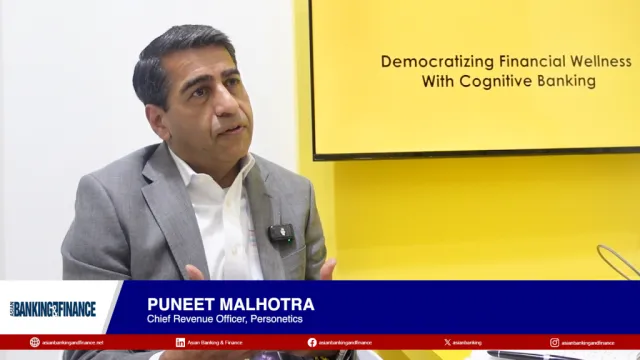
Fintech leaders urge unified standards as digital payments stay fragmented
Developers face incompatible payment systems across providers.
Payments and digital asset firms will need shared, internet-native standards to support the next phase of digital money, as current systems remain disconnected and difficult to connect across providers, industry leaders said.
There needs to be a standard for sending and receiving money, regardless of whether it’s in stablecoins or traditional currency, said Erik Reppel, Head of Engineering, CDP, Coinbase.
Some verticalised players have their own application programming interfaces (APIs), but there’s no interoperability between different payment service providers with their own proprietary payment stacks,” Reppel said during the ‘BLOOM’ panel discussion at the Singapore FinTech Festival 2025 on 13 November.
The becomes a real issue with the rise of agentic commerce,” he said, noting that if an agent cannot recognise a service’s API, it simply cannot complete the transaction.
The region’s payment landscape continues to be highly fragmented despite progress in domestic real-time payment systems, according to Tianwei Liu, Co-founder & CEO of StraitsX.
“For example, Singapore connected with Thailand, and separately with Indonesia, but that didn’t mean Indonesia and Thailand were connected,” Liu said.
Paul Harapin, Chief Revenue Officer, Asia Pacific & Japan, Stripe, highlighted similar challenges. “We’ve realised that as agents become more involved in the buying cycle, there’s no agent on the other end.”
To address this, Harapin shared that they co-developed ACP with OpenAI. “The goal is to simplify payments so merchants can focus on running their sites, whilst relying on a secure system that works for traditional payments and, over time, stablecoins.”
“It’s not Stripe-proprietary. Any payment or artificial intelligence (AI) company can use it,” he added.
Stablecoins were also presented as a tool that already offers simpler connectivity for developers.
“Stablecoins create a standard that allows a developer to connect quickly and build products without wasting time on lengthy business development efforts,” Liu said.
“Thanks to its programmability and instantaneous finality, we can build on a public ledger with permissioned compliance and control,” he added.
The panel also linked technical gaps to the broader shift toward next-generation settlement infrastructure.
The ‘Bloom’ initiative was launched after the Monetary Authority of Singapore (MAS) recognised that opportunities in digital money extend beyond the city-state, said Alan Lim, Director & Head, Financial Infrastructure & Artificial Intelligence Office, MAS.
“The acronym stands for ‘Borderless, Liquid, Open, Online, and Multi-currency’,” said Lim, who also moderated the panel, adding that the new initiative builds on ‘Project Orchid’, which focused on the domestic digital Singapore dollar.
Here’s a snippet of the panel discussion below:
Lim: From a payments protocol perspective, what’s broken with internet payments today? What are we trying to solve here?
Reppel: As agents come online, the need for these standards becomes even more apparent. I think all of us take for granted that the internet works so well because it’s built on open standards that every company accepts as uncontroversial — things like HTTP, HTML, JavaScript, and CSS. Those standards have allowed the internet to become a positive-sum system that enables commerce, information exchange, and value to flow dynamically.
Now, as AI emerges as a new economic actor on the internet, we need commonly adopted standards that allow AI to thrive in the same way the early internet did. X402 is focused on direct payments and the transfer of value. Then there are protocols like ACP by Stripe, which aim to standardise the e-commerce checkout flow, and MCP to standardise tool calls, and Google’s A2A, which standardises agent-to-agent communication.
Looking ahead five to ten years, I think we’ll see these as the standards that laid the foundation for the agentic web to be as interoperable — and as valuable, if not more so — than the current internet.
Lim: Do you see faster payment rails and stablecoins competing or complementing each other?
Liu: When we first started the company, I wanted to address the fact that the Southeast Asian market is highly fragmented. Payments are siloed, and we wanted to build API layers that make it easy for developers to connect the dots.
But when you become an actual practitioner on the ground, running operations, you start to see the real problems: the silos, the inefficiencies caused by moving between organisations, different banking rails, and varying regulations. We then realised that, domestically, many countries’ initiatives had already solved much of the real-time payment system itself.
The next frontier, however, is the fragmentation between countries. As a FinTech, you want to work with everyone and connect the dots. But from a technical perspective, this quickly becomes a problem. You can’t build connectivity one by one and expect everyone to connect to your hub-and-spoke model.
We realised that interoperability is key. With stablecoins — thanks to programmability, instantaneous finality, and a common ledger — we can build on a public ledger with permissioned compliance and control to solve these challenges efficiently.
On top of that, there were two main goals. One was to build out APIs, but even with APIs, you still need licenses, compliance, and business development discussions before everything can connect. On the other hand, stablecoins create a standard that allows a developer — even someone in a garage like I used to be — to connect quickly over a weekend and build innovative products without spending a lot of time on BD efforts, enabling faster experimentation and iteration.
Lim: How are you thinking about AI being incorporated into new rails?
Harapin: 'We’ve been using AI within Stripe to optimise payments for a long time. We’ve built a new foundation model around fraud, and to give you an indication, we improved card testing detection for attacks on large users from around 59% to 97% because of our large data model, though it’s a complex system to handle.
Internally, we’ve been using AI for quite a while. We’ve realised that as agents enter the buying cycle, there’s currently no agent on the other end. If you watch some of the demonstrations, it’s quite funny — the agent has to check out at a human checkout.
To scale this, we co-developed ACP with OpenAI. It’s an open-source, community-based standard — it’s not proprietary to Stripe. Any payment company or AI company can leverage it. We just started with us and OpenAI, and we expect it to continue evolving.
The goal is to remove complexity so that merchants and the technology behind running a merchant site can focus on their end while relying on everything reliable in between. This applies to traditional payments now and, over time, stablecoins — particularly for cross-border flows — and allows agents to integrate seamlessly.
What we hear from merchants is that they were initially worried about losing control after spending so much time building their brand and customer relationships. The protocol is built to protect all of that. We’ve also built shared payment tokens so that money flows securely — nothing is exposed to the world, but the transaction completes successfully.
This setup also changes the user experience. We’re no longer searching through websites, opening ten tabs, and browsing endlessly. You can be highly specific in your search. If you’re paying for a subscription and your AI agent is learning your preferences, it can propagate that knowledge across other searches and provide exactly what you need.
It’s still early days, and we’re continuing to invest. We’re working not just with OpenAI, but also with Microsoft, Perplexity, and Manus here in Singapore. The evolution is happening very fast, and payments are at the centre of it all.

















 Advertise
Advertise










